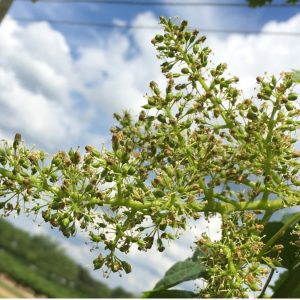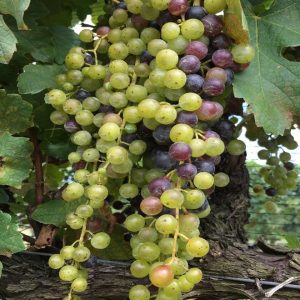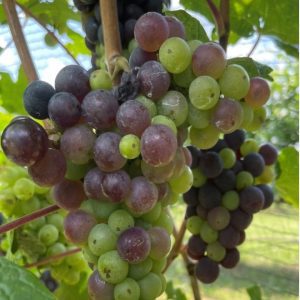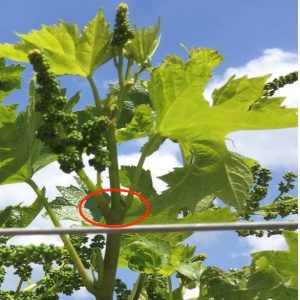Crop Production

Grape mineral nutrition plays a critical role in the vineyard management, as it contributes to balanced vegetative growth and yield production. It can also improve fruit quality and enhance vine cold hardiness and longevity. It is important to monitor and manage the vineyard’s soil and plant nutrient status for optimal efficiency.
A soil test typically measures how much of each of the nutritional elements is currently present. The soil test also provides information on other factors—such as organic matter content, soil pH, and cation exchange capacity—that are important when making management decisions. Deficiencies that are seen in these tests can then be dealt with by supplementing the soil with different materials. It is generally recommended that you perform a soil test prior to planting a new vineyard and every three years.
While soil testing is important, it alone does not adequately signal nutritional needs of perennial crops like grapes. Vine-tissue testing is the preferred method of monitoring the nutritional needs of grape plants. This form of testing will help identify timely problems, such as mineral deficiencies, and help you manage fertilization practices to maintain proper plant health.
Collecting Tissue Samples
When
There are two options to consider for tissue sample collection in the vineyard.
The first option is during bloom, when approximately 60 to 70 percent of the flower caps have fallen (figure 1). Grape bloom time may vary, depending on several factors including location, cultivar, and management practices. So, monitor your vineyard and consider tissue sampling for nutrient analysis.
The second option for tissue sample collection in your vineyard is during the veraison stage, when approximately 50 percent of the berries have colored as they mature (figures 2a and 2b).
- Figure 1. A bunch grape cluster 60 to 70 percent into the fallen-flower-cups stage.
- Figure 2a. A bunch grape cluster at the approximately 20% veraison stage of berry maturity.
- Figure 2b. A bunch grape cluster at the approximately 50% veraison stage of berry maturity.
- Figure 3. Showing a bunch grape shoot with a leaf positioned at the same node as the fruit cluster.
Where
Collect separate tissue samples from each grape variety and rootstock combination in your vineyard. Typically, a tissue sample should not represent an area over 10 acres.
How
- During Bloom. Collect 60 to 100 petioles (the stem that holds the leaf blade to the shoot) from leaves that are positioned at the same node as the cluster (figure 3).
- During the Veraison Stage. Collect 60 to 100 petioles and/or leaf blades from recently matured, fully expanded leaves on the shoot. These are typically located five to six leaves back from the shoot tip.
Once collected, place the sample in a clean paper bag and label it to identify the cultivar, location, and date of sample collection. Mail the sample to the Auburn University Soil, Forage, and Water Testing Laboratory. You can find the shipping address and other needed information at aaes.auburn.edu/soil-forage-water-testing-lab/.





